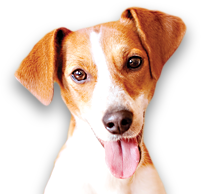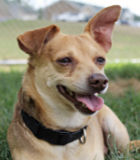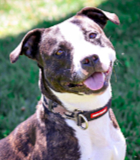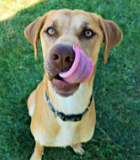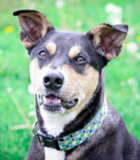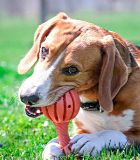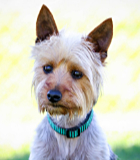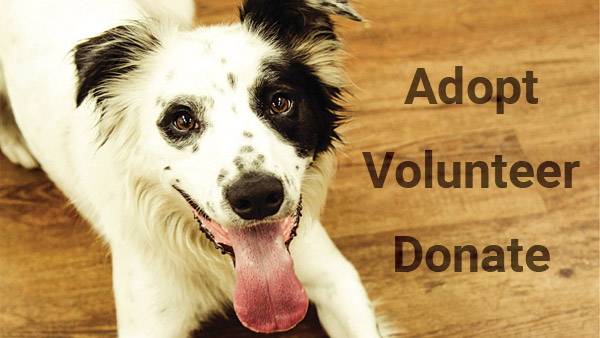Teaching Your Dog to Eliminate in a Specific Place
- This topic has 0 replies, 1 voice, and was last updated 13 years, 10 months ago by
Mackenzie’s Admin.
-
AuthorPosts
-
June 17, 2010 at 4:06 pm #538
Mackenzie’s Admin
MemberSome people want to teach their dogs to eliminate in a specific spot outside rather than eliminating anywhere and everywhere. For example, you might want to keep your kid’s sandbox pristine, your nice flowers alive, your garden vegetables edible or your lawn free of urine marks. Keep in mind, though, that dogs don’t naturally know that they shouldn’t pee in your pansies. You’ll need to teach your dog where you want him to eliminate using consistent, gentle training.
Preparing the Potty Area
Finding a way to clearly delineate your desired dog elimination area can help your training progress more quickly because dogs readily learn from visual and spatial cues. If possible, outline the potty area using something your dog will easily notice, such as inexpensive wire garden fencing (two feet high or less) or some large, decorative stones. Whatever you use shouldn’t physically prevent your dog from moving in and out of the potty area. It will just be a visual sign that reminds your dog where to go.Keys to Training
Just like people, dogs develop habits. If your dog already habitually urinates or defecates in a specific place, the smell of that place and your dog’s history of using it to eliminate will prompt him to continue to relieve himself there. So it might be challenging to convince him to change his mind about where to take bathroom breaks. However, if you’re patient and consistent, you can teach your dog to use a new potty area instead of his old one.To successfully teach your dog to eliminate in a specific place, you’ll need to do two things:
Prevent him from eliminating where you don’t want him to
Reward him when he eliminates where you do want him toDon’t Go There
To help your dog form a new habit, you’ll need to prevent him from eliminating in all other areas for a while. Keep him on the same schedule you’ve been using, giving him regular opportunities to go out, but instead of letting him outside to find a spot on his own, take him out yourself on a leash. Lead him to the place where you’d like him to eliminate. When you get there, wait until your dog urinates or defecates. If he’s not used to eliminating while on a leash, you might have to wait a few minutes. Try walking around a little in the designated potty area and be as quiet and unobtrusive as you can. If your dog doesn’t eliminate within three to five minutes, take him back inside. Try again in 10 to 15 minutes. Continue to give your dog brief but frequent opportunities to go out to the potty area on a leash until he eliminates there.Do Go Here!
When your dog relieves himself in the place you’ve chosen, praise him calmly and, as he finishes up, reward him right on the spot with several delicious treats. Don’t make him come to you to get the treat. The more delicious the rewards, the bigger an impression you’ll make, so use something extra-exciting, like small pieces of chicken, hot dog or cheese. Reserve these special treats for bathroom breaks, only letting your dog have them after he’s eliminated in the right spot.Timing is crucial. To understand why he’s getting rewarded, your dog must receive his treats right as he’s finishing eliminating. For this reason, set yourself and your dog up to succeed by staying prepared. Keep a supply of training treats in a convenient place so that you can get to them easily when it’s time to take your dog out. Consistency is also crucial if you want your dog to learn what you’re trying to teach him. Be sure to accompany your dog outside for all potty breaks and reward him on the spot every time he goes in the right place.
If your dog loves to fetch or tug, try playing a game with him right after he eliminates in his designated area and eats his treats. If he prefers exploring to playing, reward him with a walk instead. The idea is to convince your dog that it always pays big to rush right to his designated potty area.
Increase Your Dog’s Freedom
After about two weeks of training, during which you’ve prevented your dog from eliminating in all places except the one you’ve chosen, and you’ve rewarded him generously every time he urinates or defecates in the correct area, you’ll need to help him learn to keep up his new habit when he’s not on a leash. The key to success is to increase your dog’s freedom slowly.Step One: Use a Long Line
When it’s time to take your dog out, use a long line—a 15- to 30-foot training lead—to teach your dog to eliminate in the right spot when you’re not right next to him. (You can find a long line at most pet stores and at online pet stores. Alternatively, you can just buy a long, soft rope or clothesline and attach that to your dog’s collar.) Before going outside with your dog, clip the line to his collar. Let your dog move ahead of you into your yard, dragging the line on the ground behind him. If you see him heading for the designated potty area, great! Be ready to praise him, and then immediately reward him with his special treats right after he eliminates. If he heads for another spot instead to eliminate, get his attention by clapping your hands and calling his name. Quickly pick up the line and lead your dog to the place where you want him to eliminate. If he urinates or defecates there, praise and reward him.Repeat this step until, without your guidance, your dog consistently heads straight for the potty area as soon as you let him out.
Step Two: Supervise In-Sight
Now it’s time to stop using the long line and let your dog run to the potty area by himself. When you let your dog out, don’t clip on the line, but continue to accompany him outside. Carry a leash so that you can use it if he forgets where to go.Watch your dog carefully and be ready to give him feedback. If he runs to his spot to eliminate, reward him with praise, treats and playtime. If he starts to eliminate somewhere else, clap your hands and call his name to interrupt him. Then immediately approach him, clip on his leash and lead him to the correct spot. Praise and reward him if he goes there.
When your dog consistently runs to the potty area to eliminate, without you having to remind him where to go, you can move on to step three.
Step Three: Supervise Out-of-Sight
Until now, your dog has learned that it’s a great idea to eliminate in your designated potty area—when you’re with him. Now you need to teach him that it’s still a great idea when you’re not in sight. When it’s time to let your dog out, open the door but don’t go out with him. Watch from the door or through a window inside. If your dog eliminates in the right place, go outside to meet him, praise him and give him treats. If he tries to eliminate elsewhere, run outside clapping your hands and show him the right place, just as you’ve done before. With repetition, your dog will learn that he should always eliminate in the place you’ve chosen, whether he can see you or not.Keep the Habit Strong
After you’ve progressed through the training steps above, your dog will have formed a new habit of eliminating in a specific place that you’ve chosen. To keep that habit strong and reliable, you’ll need to periodically reward him for continuing to eliminate there. You don’t have to reward him every time, but continue to supervise him and sporadically give him tasty treats, attention, praise and playtime.What NOT to Do
Avoid physically punishing or yelling at your dog if he eliminates in the wrong place outside. Doing this won’t teach him where you do want him to go, and it might convince him that it’s not safe to eliminate at all if you’re around. -
AuthorPosts
- You must be logged in to reply to this topic.

